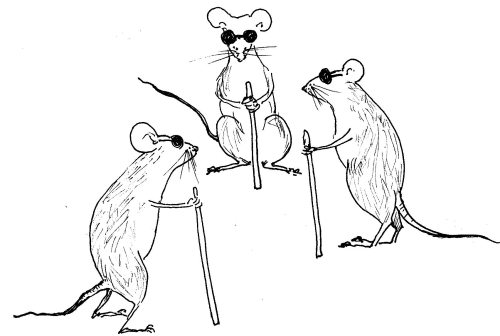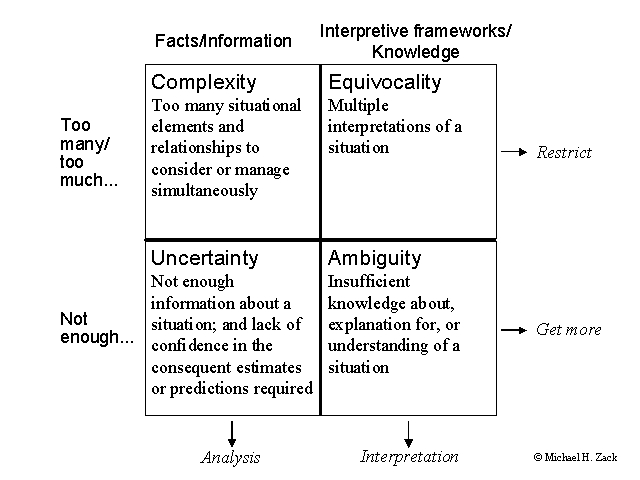
Anyone who has followed this blog knows that I am fond of talking about adaptive management (here) and railing against planning. (here, here, here). Sometimes both at once. Today I puzzle, once again, over why the Forest Service insists on three levels of planning: national, forest, and project or activity. Note: it used to be four levels, adding “regional”, but that is likely a trivial point. I ask: Why? Why? Why?
So I decided to try and understand how this particular three-level planning scheme came to be. “National” is understandable, at least in some contexts—particularly budgeting and organizational accountability, and some policy development. “Project or activity” is where work gets done. Logical enough, at least for budgeting and work planning and accountability. But I don’t know what role such plays in a forest plan, unless we are taking about the “loose leaf compendium” that the Clinton-era Committee of Scientists recommended.
“Forest”? That too makes sense for budgeting and work accountability, etc. Remember the “cut and sold” reports, during the good old go-go timbering days? I do — painfully! But there again I can’t quite wrap my mind around ecosystem/social system planning or management at this “level”, unless we are once again talking about the “loose-leaf compendium” for administrative purposes. But even here the case for a “forest” level of planning is weak. Better to work toward planning at scales where “sense of place” and/or “sense of purpose” are in play. These type scales often cross forest borders, and often include other than forest service lands.
Finally, I began to think through the history of the Forest Service and in particular try to better understand the run-up via controversy to the National Forest Management Act (1976), following in the heels of the then recently passed Renewable Resources Planning Act of 1974. Not much help there. NFMA mandates a “forest plan” but doesn’t require the type forest plan the forest service keeps writing into its “rules.” Note that the timber sale, etc. restrictions in the NFMA can still be applied even with the COS “loose-leaf compendium” notion of a forest plan.
For completeness, here is what the Clinton-era Committee of Scientists recommended, in part (from Proposed Summary of COS Report, Feb 9, 1999):
The NFMA calls for development of an integrated land- and resource-management plan for each national forest and grassland. In our approach the integrated plan is the assemblage of all policies and decisions affecting an administrative unit. It can include regional guidance for conservation strategies relevant to the area; the strategic vision, policies, and multiple-use goals developed through large landscape planning, including the description of the desired future conditions; proposed management pathways for achieving the desired future condition and multiple-use goals; implementing decisions and proposed project-level management activities developed at the small-landscape level; and sufficient records and documentation from monitoring to support ongoing adaptive management. As the foundation of administrative policy and guidance, this planning documentation also should include the budget and staffing needs for implementation as well as the procedures and timing of monitoring and review processes. As a management tool, the plan not only includes monitoring processes, but also records ongoing results and subsequent changes in both strategic and implementation decisions.
In the past, the use of administrative units as the planning units often caused large-scale ecological, economic, and social processes to be neglected or resulted in inconsistent decisions by adjacent administrative units. Therefore, the Committee suggests a planning and decision-making hierarchy whose geographic extent will often not be limited to the boundaries of a particular national forest or grassland but whose physical repository will rest at [sic] within multiple administrative units.
Thus, the land- and resource-management plan should be in the form of a loose-leaf notebook that contains all of the policy directions, strategies, and implementation proposals from decisions that have been made at all levels of the planning process. It is the official repository of decisions big and small that have been made and reviewed in the strategic and landscape-level planning processes. It must also contain the monitoring methodologies that will be implemented as well as the evaluation results from monitoring. Because this model of the land- and resource-management plan is different than that employed during the first round of NFMA planning, the process of plan amendment is also different. Rather than a formal process involving review and comment, these loose-leaf plans are dynamic and evolving, readily reflecting and accommodating the outcomes of adaptive management. Thus, as decisions are revisited and revised in response to changing social understanding, natural and social events, and policy priorities, the loose-leaf notebook immediately reflects those changes. Consequently, any “amendments” made to these plans reflect decisions that have been made and reviewed elsewhere.
I find no fault with the COS recommendations! I’m just puzzled why they are not on the table this time around. I am well aware that these recommendations were developed at the very end of Clinton’s term of office, and the incoming George W. Bush Administration moved quickly to nullify all that they could that were marked by Clinton’s footprints. (including the 2000 NFMA Rule (pdf)). Why were they not followed in the 2000 rule development?
I’m puzzled. Maybe some of you who are smarter than I can help me understand what the hell is going on here with these bizarre “three levels”? And what has been going on since 1979. What were/are the drafters of these various rules thinking? Is it just “Tradition”? (Like in Fiddler on the Roof), i.e. the language was there in 1979 rule, so it will stay until hell freezes over. Something else? Can it be justified today?
Update: As Sharon points out in comments, the 1999 Committee of Scientists Report is available on the sidebar. Here the Synopsis: pdf




